Results 6,681 to 6,690 of 12094
Thread: Anandtech News
-
01-27-17, 07:33 AM #6681
Anandtech: QNAP at CES 2017 - Thunderbolt 3 and Xeon D NAS Units, Residential Gateway
As part of my usual CES vendor visits, I caught up with QNAP and took a look at the new products and QTS features slated to enter the market over the next couple of quarters. The products that caught my eye included a new series of Thunderbolt-enabled NAS units, a couple of products targeting the IoT / residential wireless gateway space, a NAS unit with an optical drive slot, and a 16-bay Xeon D NAS in the tower form factor. On the software side, QNAP also demonstrated a new QVR Pro Surveillance Station integrating the Surveillance Station package into the QTS OS along with a host of improvements. The DJ2 Live live-stream broadcast platform was also in action at the booth. I won't go much into the software announcements - Interested readers can refer to the press release, and there really is not much to add beyond that on those aspects.
Thunderbolt NAS Units
We last looked at QNAP's offerings in our coverage of their TVS-x82T launch back in May 2016. One of the questions I had asked at the launch event was about the non-availability of Thunderbolt 3 (the TVS-x82T series came with Thunderbolt 2 ports). At CES 2017, QNAP introduced the first set of NAS units with Thunderbolt 3 support - with the TVS-1282T3 being the flagship in that segment. Sporting 8x 3.5" bays and 4x 2.5" bays along with 2x M.2 SATA SSD slots, the unit can be configured with either a Core i5-7500 or Core i7-7700 CPU. Available I/Os include 2x Thunderbolt 2 as well as 2x Thunderbolt 3 ports, 2x 10GBASE-T and 4x GbE network links, five USB 3.0 ports (one in front, four in the back), two microphone inputs, and two speaker outputs as well as a 3.5mm audio line-out. There are four SODIMM slots, allowing end-users to configure the system with up to 64GB of RAM.
QNAP also introduced the 2.5"-only TVS-882ST models - The TVS-882ST2 has Thunderbolt 2 ports, while the TVS-882ST3 has Thunderbolt 3 ports. Unlike the flagship TVS-1282T3, these units use the high-end Skylake mobile CPUs (Core i7-6700HQ or Core i5-6442EQ). The brochure for the TVS-882ST series also brings out the two Thunderbolt usage scenarios - as a direct-attached storage unit (with the expansion units allowing as much as 400TB to be accessed directly), or a 10Gb switch (with the virtual switch feature that can act as a Thunderbolt to Ethernet converter) to create a 10Gbps interface for the system connecting to it. The second feature makes a separate Thunderbolt to 10Gbps converter unnecessary.
Detailed specifications of the units in both series, as well as some of interesting information from QNAP's product brochures are reproduced in the gallery at the end of this piece.
NAS with Blu-ray Writer Support
The TVS-882BR is a 8-bay NAS with a SATA expansion bay that can either support two slim optical drives or one 5.25" optical drive. It is based on a Kaby Lake platform, supports PCIe NVMe SSDs and also two M.2 SATA SSD slots. There are three PCIe 3.0 expansion slots and three display outputs.
The device is intended for use-cases where data on the NAS needs frequent backing up to optical media. The specifications of the various members in this lineup are summarized in the gallery at the end of this piece.
16-bay Xeon D NAS
The TS-1685 lineup is one of the most comprehensive set of Xeon D-based COTS NAS units in the market today. There are nine different tower models carrying either the Xeon D-1521 or the Xeon D-1531, with choice of either ECC or non-ECC DDR4 RAM. Based on demand, QNAP indicated that versions using Xeon D-1548 could also make it to the market. Some units carry a 550W internal PSU (instead of 250W), and can support a discrete GPU such as the AMD Radeon RX480. This is particularly useful for GPU compute, as well as a 3D accelerator for virtual machines.
There are a total of twelve 3.5" bays and four 2.5" bays. On the board, there are six M.2 SATA SSD slots (supporting 2242 to 22110 form factors) with heat sinks on top as well as thermal pads at the bottom. There are four GbE ports and two 10GBASE-T ports. The three spare PCIe expansion slots (two 3.0 x8, one 2.0 x4) can be used for 10/40 GbE adapters, discrete GPUs, PCIe NVMe SSDs or USB 3.1 Gen 2 cards.
QNAP is marketing the TS-1685 as a Super NAS, and the above specifications completely justify the tag. More details are available in the pages from the brochure included in the gallery at the end of this piece.
Intel AnyWAN Designs - QBoat Sunny IoT Server and TGX-150 Gateway NAS
QNAP had two products at CES that were a bit of a departure from the traditional NAS units. Even though they have been focusing on IoT from a NAS perspective for some time, the IoT-focused QBoat Sunny caught us by surprise. Running QTS Lite (a stripped down version of the QTS NAS OS), it is meant as a platform for IoT developers to create a local IoT / home automation controller.
Synology is currently shipping their second generation wireless router, the RT 2600ac. Even though they are not trying to bring cutting-edge products to the market, they seem to have got a toehold in the market. In the set of NAS vendors who are trying to move to the larger consumer Wi-Fi router space, QNAP is throwing its hat in the ring with the TGX-150. It looks like a traditional Wi-Fi router (1x WAN, 4x LAN) and has Intel radios for a 802.11ac MU-MIMO Wi-Fi access point. This device also runs QTS Lite.
The interesting aspect of both of these products is the usage of the Intel AnyWAN GRX750 network processor / SoC. To the best of our knowledge, this is Intel's first design win in the consumer Wi-Fi router space (one traditionally dominated by SoCs from Qualcomm, Broadcom, and Mediatek).
The detailed specifications of the QBoat Sunny and the TGX-150 are included in the gallery below (along with the specifications of all the new product lines discussed above).
Gallery: QNAP at CES 2017 - New Products





QNAP's CES 2017 announcements make it clear that it is going to be difficult for any other vendor to match the wide range of hardware platforms they have on offer. It is surprising that no other NAS vendor has tried to attack the NAS / DAS / iSCSI SAN combo market that QNAP is targeting with their Thunderbolt NAS units. Multimedia-editing production houses can definitely use those types of units effectively. On the IoT / residential gateway side, QNAP's use of an Intel platform is surprising, given the prevalence of ARM-based SoCs in that market. However, without concrete pricing information or performance numbers, it is difficult to draw conclusions. The Intel AnyWAN platform seems great on paper for the applications. It might well turn out to be a credible competitor to the established platforms in the market.
More...
-
01-28-17, 08:35 AM #6682
Anandtech: NVIDIA Releases Android 7.0 Update for 2015 SHIELD TV, Adds Amazon Video A
Earlier this month when NVIDIA announced the 2017 version of the SHIELD TV, the company also announced that the updated, Android 7.0-based OS that was at the heart of the miniaturized STB would also be coming to the existing 2015 models. Now, just a bit under 2 weeks after the retail launch of the new model, NVIDIA has released their promised update as Software Upgrade 5.0.2.
Under the hood, the big change here of course is the upgrade to Android 7.0 “Nougat.” The latest version of Android doesn’t do quite as much for Android TV devices as we’ve seen on tablets and phones, but of note it adds support for a recent apps page, writing to USB/SD storage, and a new picture-in-picture mode. The latest update also adds support for NVIDIA’s 2017 hardware accessories: the revised SHIELD Remote (Pepper) and SHIELD Game Controller (Thunderstrike).
Meanwhile the biggest user-facing change is the addition of an Amazon Video app. While NVIDIA has been focused on growing out the video/app selection of their STB since it launched in 2015, Amazon has until now been a very notable absence. For NVIDIA this is particularly important since Amazon is one of a handful of streaming video services supporting 4K video and HDR, making it one of the few services that can fully show off what the hardware can do (ed: and just in time to catch the full first season of The Grand Tour).
And on the subject of 4K and HDR, the update also rolls out full support for 4K and HDR GameStream. This feature had been in limited testing up to this point. The update also brings in improved support for NVIDIA’s recently updated GeForce Now Internet game streaming service, allowing SHIELD TV to connect to the updated GTX 1060/1080 hardware (which, I suspect, is a precursor to streaming via HEVC). On that note, it should be pointed out that while the GeForce Now for PC/Mac program was announced to be a pay-by-the-hour service, NVIDIA is retaining their monthly $8 subscription service for GeForce Now for SHIELD devices.
Going forward, the 2015 SHIELD TV will also eventually get support for Google Assistant and SmartThings Hub functionality. However like its 2017 counterpart, this feature is still under development and won’t be released until later this year.
More...
-
01-28-17, 10:22 AM #6683
Anandtech: SK Hynix Lays Out Plans for 2017: 10nm-Class DRAM, 72-Layer 3D NAND
SK Hynix this week announced financial results for its fiscal year 2016 and also revealed general plans for 2017. As expected, the company intends to start volume production of new types of memory and expand production capacities. What is noteworthy is that the company will primarily invest in the expansion of NAND flash manufacturing capacities, rather than the expansion of DRAM production, in the short-term future.
DRAM: 21 nm Ramping, 18 nm(?) on Track for 2H 2017
SK Hynix began to make DRAM using its 21 nm fabrication process in late 2015. The manufacturer has been gradually expanding usage of the technology as well as improving its yields since then. By now, SK Hynix makes a wide range of its products (including mainstream DRAM, mobile DRAM and specialized memory) using its 21 nm manufacturing process. This week the company confirmed that it intends to start volume production of DRAM using its 10 nm-class process technology (which industry experts believe is 18 nm) this year.
Just like other memory makers, SK Hynix plans to be conservative about its DRAM capital expenditures in 2017 and at present the company does not plan to undertake any significant capacity expansions. In the meantime, further increase of DRAM production using the 21 nm fabrication process and the start of 18 nm DRAM volume ramp in the second half of 2017 will automatically boost SK Hynix’s DRAM bit output — as memory cells get smaller, it is possible to produce more bits using one 300 mm wafer.
Meanwhile, analysts from TrendForce believe that DRAM bit demand in 2017 will surpass 20% year-over-year, whereas DRAM bit supply by various makers will increase by around 19% YoY. The imbalance between demand and supply is projected to create shortages of DRAM as well as keep prices at high levels. Apart from PCs, there are two more factors that are going to raise demand for memory: first, Intel’s upcoming Xeon platform 'Purley' is expected to drive demand; and second, higher-end Google Android-based smartphones are expected to receive a memory upgrade with top-of-the-range models holding 8 GB of LPDDR4/LPDDR4X.
NAND: 72-Layer 512 Gb Chips Due in Late 2017
Demand for NAND flash has been steadily increasing in the recent years because the industry is increasing output of NAND-based devices (e.g., smartphones, SSDs, consumer electronics, etc.) as well as its content per box (e.g., the entry-level Apple iPhone 7 now contains 32 GB of storage, up from 16 GB). To meet the growing demand, manufacturers expand production capacities and introduce higher-capacity 3D NAND memory chips. Just like its competitors, SK Hynix plans to boost production of NAND in general and launch new ICs.
SK Hynix started to mass-produce its 36-layer 128 Gb 3D MLC NAND (which it calls 3D-V2) chips in 2015 and these ICs have been primarily used for various removable storage products. Last year, the company also started to make 48-layer 3D NAND (3D-V3) ICs that are to be used for various types of memory cards, flash drives, embedded storage and SSDs. With its third-gen 3D NAND, SK Hynix focuses on 256 Gb (32 GB) TLC ICs. The latter are used to build various NAND packages with 256 Gb, 512 Gb, 1024 Gb, 2048 Gb and even 4096 Gb capacities, which can be used for a variety of applications.
Later this year SK Hynix intends to start volume production of 72-layer 3D TLC NAND (3D-V4) memory and this is where things start to get interesting. Initially, SK Hynix intends to produce 256 Gb 3D TLC ICs and these are going to be available already in Q2 2017, according to the company’s product catalog. Later on, sometimes in Q4, the company plans to introduce 512 Gb 3D TLC ICs (64 GB), which will help it to significantly increase capacities of SSDs and other devices featuring NAND flash. What is important about SK Hynix’s fourth-gen 3D NAND is that it will feature block size of 13.5 MB, which will increase the performance of such ICs compared to 3D-V3 and 3D-V2 that have a block size of 9 MB. At this point, we do not know whether SK Hynix intends to increase interface speed of its 512 Gb 3D-V4 ICs to compensate lower parallelism in lower-capacity SSDs, like Samsung did with its high-capacity 64-layer 3D V-NAND chips. What we do know is that SK Hynix’s catalog already includes NAND multi-chip packages of 8192 Gb capacity (1 TB) that will enable high-capacity SSDs in smaller form-factors (e.g., 2 GB single-sided M.2). Meanwhile, 64 GB NAND flash chips may force SK Hynix and its partners to abandon low-capacity SSDs (i.e., 120/128 GB) unless there is sufficient demand.
M14 Fab Gets Second Layer Floor
As reported earlier, SK Hynix also plans to start using the upper floor of its M14 facility to produce NAND memory this year. The company this week confirmed the plan, but revealed no specifics.
In any case, as the manufacturer continues to ramp up the M14 fab and its NAND flash output is increasing. Since SK Hynix is also gradually switching to 256 Gb (and 512 Gb starting from Q4), its NAND bit output is also gradually growing, which enables it to sell higher-capacity storage solutions.
SK Hynix also plans to start cleanroom expansion of the C2 fab in Wuxi, China, which will cost the company around $790 million and will take nearly two years. The C2 manufacturing facility is used to make DRAM and since manufacturing technologies involve more complex and lengthening production cycles, the cleanroom expansion will enable SK Hynix to maintain the current output of the C2 into the future. Keep in mind that the work is expected to be finished in April 2019, so do not expect the expansion to have any short-term effects on memory prices.
Related Reading:
- SK Hynix to Build a New NAND Fab, Upgrade Existing DRAM Fab
- SK Hynix Announces 8 GB LPDDR4X-4266 DRAM Packages
- SK Hynix Adds HBM2 to Catalog: 4 GB Stacks Set to Be Available in Q3
- Plextor Launches S2C SSDs: 16 nm SK Hynix TLC NAND and SMI SM2258
- Micron 3D NAND Update: 2D and 3D NAND Bit Crossover, Gen 2 Hits Production
More...
-
01-28-17, 01:35 PM #6684
Anandtech: MSI Upgrades Its Aegis and Nightblade PCs with Intel’s Kaby Lake CPUs
MSI this month upgraded its whole lineup of gaming desktops with 7th generation Intel Core Kaby Lake processors as well as newer motherboards featuring Intel’s 200-series chipsets. The new Aegis and Nightblade systems have the same design and capabilities as their predecessors, but they now offer higher performance because of the CPUs and a better feature set because of the new chipset (PCH).
MSI’s Aegis and Nightblade computers are different in terms of positioning, but they have a lot of similarities when it comes to architecture. Firstly, the PCs use dual-chamber designs to ensure better cooling of their CPU and GPU, and they both simplify upgrades to a certain degree. Secondly, all the systems are based on Mini-ITX motherboards to minimize their footprint and make that dual-chamber design possible in case of miniature Nightblade PCs. Thirdly, gaming computers from MSI come with numerous configurable RGB LEDs to give their owners ability to customize their design according to their taste using MSI’s Mystic Light or Gaming Center software. Finally, all the latest MSI gaming PCs (except the Nightblade MIB) feature front HDMI ports to connect VR headsets.
The Nightblade series from MSI is designed to be as miniature as possible using off-the-shelf components: we are talking about 10-16 liter boxes here with up to 500 W PSUs. Given the relatively small sizes, the new Nightblade PCs use Intel B250-based motherboards, do not support CPU overclocking and can fit in up to three storage devices (in addition to one or two PCIe NVMe SSDs) - being a mix of 2.5-inch and 3.5-inch combinations. When it comes to graphics performance, we are still talking about very high-performance machines with either GeForce GTX 1060 or 1070 GPUs that can be overclocked if needed and there is enough cooling and power headroom.
Gallery: MSI Nightblade 3MSI Nightblade Specifications Nightblade MIB Nightblade MI3 Nightblade 3 CPU Intel Core i5-7400
4C/4T
3 GHz/3.5 GHz
6 MB L3 Cache
HD Graphics 630
65 WIntel Core i7-7700
4C/8T
3.6 GHz/4.2 GHz
8 MB L3 Cache
HD Graphics 630
65 WPCH Intel B250 Graphics MSI GTX 1060 GAMING (3 GB) MSI GTX 1060 GAMING (6 GB) MSI GTX 1070 GAMING (8 GB) Memory 2 × 8 GB DDR4-2400 SO-DIMMs, up to 32 GB 2 × 8 GB DDR4-2400 DIMMs, up to 32 GB Storage Installed 128 GB M.2 SATA SSD
1 TB 3.5" HDDBays 2 × 3.5“ HDD
1 × 2.5“ HDD/SSD
2 × M.2 NVMe PCIe1 × 3.5“ HDD
2 × 2.5“ HDD/SSD
1 × M.2 NVMe PCIeOptical 9.5-mm DVD ODD Wi-Fi Intel AC3168 IEEE 802.11ac Wi-Fi + BT 4.2 Ethernet Qualcomm QCA8171 Intel I219V Display Outputs Front Panel 1 × HDMI (front) Graphics Card 1 × HDMI 2.0
1 × DisplayPort 1.4
1 × DVI-I1 × HDMI 2.0
3 × DisplayPort 1.4
1 × DVI-I1 × HDMI 2.0
3 × DisplayPort 1.4
1 × DVI-IAudio 5.1-channel
Realtek ALC1150
Audio Boost 3
Nahimic 2.55.1-channel
Realtek ALC1220
Audio Boost 4
Nahimic 2.5USB Front - 1 × USB 3.0 Type-C
2 × USB 2.0 Type-ARear 4 × USB 3.0 Type-A 1 × USB 3.1 Type-A
1 × USB 3.1 Type-C
2 × USB 3.0 Type-A
2 × USB 2.0 Type-ASide 1 × USB 3.0 Type-C
3 × USB 2.0 Type-A- Other I/O Earphone, microphone 3.5-mm jacks, PS/2, SPDIF Dimensions W×H×D 127 × 234 × 340 mm 128 × 268 × 342 mm 177 × 294 × 426 mm Volume 10 L 16 L PSU 350 W
80 Plus Bronze500 W
80 Plus SilverOS Windows 10 Home 





The Aegis family of desktops from MSI consists of the Aegis 3, X3 and Ti 3. These systems are aimed at gamers seeking for higher performance and expandability, which is why two out of three models (the Aegis Ti3 and the Aegis X3) are based on the Intel Z270 PCH, support manual and automatic CPU overclocking (they have a special MSI Game Boost button on their sides to activate the feature), come with 850 W or 600 W PSUs and the company’s Silent Storm cooling system. The Aegis PCs feature a triple-chamber design with the third chamber housing their PSUs.
All three Aegis PCs can accommodate up to three SSDs/HDDs in combination, in addition to two or three M.2 SSDs (which can work in RAID) as well as feature Rivet Networks wired or wireless Killer network controllers that can prioritize gaming traffic over traffic generated by other apps. MSI’s Aegis computers use NVIDIA’s GeForce GTX 10 graphics cards, but the top-of-the-range Aegis Ti3 can actually accommodate up to two GeForce GTX 1070/1080 boards in SLI (making it the world’s only Mini-ITX PC with two GPUs) and up to 64 GB of DDR4-2400 memory.MSI Aegis Specifications Aegis 3 Aegis X3 Aegis Ti3 CPU Intel Core i7-7700
4C/8T
3.6 GHz/4.2 GHz
8 MB L3 Cache
HD Graphics 630
65 WIntel Core i7-7700K
4C/8T
4.2 GHz/4.8 GHz
8 MB L3 Cache
HD Graphics 630
91 WPCH Intel B250 Intel Z270 Graphics MSI GTX 1060 6GB
MSI GTX 1070 8GBMSI GTX 1070 8GB
MSI GTX 1080 8GB2 × MSI GTX 1070 8GB
2 × MSI GTX 1080 8GBMemory 1 × 8 GB DDR4-2400 SO-DIMMs
up to 32 GB2 × 16 GB DDR4-2400 SO-DIMMs
up to 32 GB4 × 16 GB DDR4-2400 SO-DIMMs
up to 64 GBStorage Installed 2 × 256 GB NVMe SSDs
2 TB 3.5" HDD2× 512 GB NVMe SSDs
3 TB 3.5" HDDBays 2 × 3.5“ HDD
1 × 2.5“ HDD/SSD
2 × M.2 NVMe PCIe2 × 3.5“ HDD
1 × 2.5“ HDD/SSD
3 × M.2 NVMe PCIeOptical 9.5-mm DVD ODD Wi-Fi Intel AC3168 IEEE 802.11ac Wi-Fi + BT 4.2 Killer Wireless AC 1435 802.11ac Wi-Fi + BT 4.1 Ethernet Killer E2500 GbE with Killer Shield Display Outputs Front Panel 1 × HDMI (front) Graphics Card 1 × HDMI 2.0
3 × DisplayPort 1.4
1 × DVI-IEvery card:
1 × HDMI 2.0
3 × DisplayPort 1.4
1 × DVI-IAudio 5.1-channel
Realtek ALC1150
Audio Boost 3
Nahimic 2.55.1-channel
Realtek ALC1220
ESS Sabre DAC
Audio Boost 4
Nahimic 2.5USB Front 1 × USB 3.0 Type-C
2 × USB 2.0 Type-A1 × USB 3.1 Type-C
2 × USB 3.0 Type-A1 × USB 3.1 Type-C
1 × USB 3.1 Type-A
1 × USB 3.0 Type-ARear 4 × USB 3.0 Type-C
2 × USB 2.0 Type-A6 × USB 3.0 Type-A
2 × USB 2.0 Type-A4 × USB 3.0 Type-A
4 × USB 2.0 Type-AOther I/O Earphone, microphone 3.5-mm jacks, SPDIF, PS/2 Dimensions W×H×D 170 × 376 × 433 mm 510 × 196 × 506 mm Volume 19.6 L 39 L PSU 450 W
80 Plus Bronze600 W
80 Plus Silver850 W
80 Plus PlatinumOS Windows 10 Home
It is interesting to note that instead of using a larger (say, microATX) motherboard with two PCIe 3.0 slots, in the case of the Aegis Ti3 MSI decided to use a Mini-ITX mainboard and then use a riser card with a PCIe switch to bifurcate the only PCIe 3.0 x16 slot between two cards.
The Aegis Ti3 is a pretty large system that uses a 39-liter chassis. Given its configuration (two graphics cards, two SSDs with 1 TB capacity, 3 TB HDD, etc.), it can rival some of the systems made by boutique PC makers.
Gallery: MSI Aegis X3





MSI’s Aegis and Nightblade PCs come with pre-installed microprocessors, video cards, storage and memory components, but actual configurations may vary in different regions. Therefore prices of the systems are going to vary greatly depending on the actual setup and components.
More...
-
01-30-17, 09:20 AM #6685
Anandtech: Basemark Releases VRScore, a VR & VR Headset Benchmark Suite for Windows
Back in 2015 as the development of the first generation of modern VR headsets was coming to a close, benchmark developer Basemark announced that they would be applying their talents to the field of VR. The benchmark, now named VRScore, was to be developed in conjunction with Crytek and would serve as a multi-faceted VR test suite for VR headsets and computers, covering everything from rendering performance to display latency. At the time Basemark was expecting to launch the benchmark in mid-to-late 2016, and while development has taken a bit longer than expected, they are finally releasing version 1.0 of the benchmark this morning.
The final product – or rather the first iteration thereof – is designed to be a high-end AAA-quality benchmark, an unsurprising choice given the use of CryEngine V and the need for benchmarks to be forward-looking. CryEngine V of course introduces support for VR to CryEngine, but it also adds support for DirectX 12 as well. For VRScore, Basemark has played things a little more conservatively, designing the benchmark and its “Sky Harbor” scene around DX12, but including a DX11 mode as well for pre-Windows 10 OSes and headsets that don’t yet work with DX12 mode (which happens to be everything except the Oculus Rift at this time). VRScore has no specific minimum recommended GPU – and Basemark isn’t looking to test against Oculus/Valve’s GTX 1060/RX 480 class GPU performance recommendation – but to sustain 90fps you’ll generally need a GTX 1080 or faster.
Also notable here is that Basemark is looking to support as many PC VR headsets as possible. So this includes not only the Oculus Rift and HTC Vive SDKs, but also the OpenVR and OSVR SDKs. This is an important distinction not only because of the wider compatibility afforded by supporting more SDKs, but because it underscores just how important the SDK is in VR performance. The VR headset SDKs dictate the resolution used – following the best practices for each headset – along of course with controlling how synchronization and features like timewarp/spacewarp work. Consequently at this stage of development, benchmarking an active VR headset is as much an SDK benchmark as it is a GPU or CPU benchmark.
Overall, VRScore is broken down into 3 different types of tests. A 4K “baseline” test run without the headset that is meant to be a more typical system benchmark, a second headset-off test run at headset resolutions and configurations, and finally a headset-on test which runs as a proper VR workload. In the case of the latter two tests, this is particularly interesting as it allows Basemark to actually show the performance cost for VR – how much performance is lost from VR SDK features such as lens distortion, 3D audio, and various synchronization steps. As it turns out, the performance hit is not insignificant.
Gallery: VRScore Results: RX 480, GTX 1060, GTX 1080CPU: Intel Core i7-4960X @ 4.2GHz Motherboard: ASRock Fatal1ty X79 Professional Power Supply: Corsair AX1200i Hard Disk: Samsung SSD 840 EVO (750GB) Memory: G.Skill RipjawZ DDR3-1866 4 x 8GB (9-10-9-26) Case: NZXT Phantom 630 Windowed Edition Monitor: Asus PQ321 Video Cards: AMD Radeon RX 480
NVIDIA GeForce GTX 1080 Founders Edition
NVIDIA GeForce GTX 1060 Founders EditionVideo Drivers: NVIDIA Release 378.49
AMD Radeon Software Crimson 17.1.1OS: Windows 10 Pro 





Starting things off with AMD’s Radeon RX 480 and Oculus Rift attached, the average framerate with the full test drops 14% when the Rift is enabled. Unsurprisingly, even without the headset the RX 480 was already averaging less than 90fps, but the additional load brings the average framerate down to the mid-60s. Though all-told, the RX 480 doesn’t fare too poorly here; the downscaled resolution subtest, which tests a scene at 80% of the VR SDK’s recommended resolution (~ 2131x1268 for a Rift, almost precisely its native resolution) has the card averaging 89fps with an HMD. This goes to show just how expensive supersampling is, as although these relatively low DPI pentile screens greatly benefit from it, the performance cost is significant
Meanwhile in the NVIDIA camp, the story with the GTX 1060 is pretty much the same, to the point that the RX 480 and GTX 1060 are within a couple of FPS of each other. The GTX 1060 ends up paying a 17% performance penalty here with the Rift enabled, and similarly quickly perks up once Basemark pulls back on the resolution some. As for the GTX 1080, its high performance means the card has little trouble averaging 89fps with the benchmark’s default test, hitting the 90Hz refresh rate cap much of the time. Put another way, with a 131fps frame rate with the headset turned off, the GTX 1080 has more than enough performance to pay the price of VR overhead.
Moving on, as I mentioned before the other major test in VRScore is the VRTrek Suite, Basemark’s VR headset evaluation tool. Whereas VRScore measures the headset itself, specifically the application-to-photon latency, dropped frames, and duplicated frames.
To measure this, the VRTrek Suite uses the VRTrek tool, a curious device composed of a pair of phototransistors and plugs into a microphone jack. Intended to simulate the human eye, the VRTrek device is what gives the software feedback on the VR headset’s performance. Phototransistors of course aren’t cameras, so they can’t see/report a full image, but they are sensitive enough to see the cues Basemark puts in the rendered image for headset testing.
Measuring input latency and dropped frames goes as far back as the original proposal for VRScore, but it’s interesting that Basemark has opted to follow-through with it. Competitor Futuremark developed a similar test during development of their VRMark benchmark, but they ultimately scaled it back to just industry use, saying that “measuring the latency of popular headsets does not provide meaningful insight into the actual VR experience” and instead focusing on subjective/experiential testing, especially as modern VR SDKs employ a number of tricks to reduce the perceived latency. As a result, the VRTrek is a fairly unique device since Basemark intends to make it accessible (though I suspect not cheap) outside of the usual industry circles.
I haven’t had the chance to use the VRTrek on headsets from multiple vendors yet, but in testing it against the Oculus Rift, it does what it sets out to do. At the moment I’m not sure how valuable that’s going to be, but as Microsoft is trying to encourage cheap(er) VR with their $300 headset initiative, this will likely prove useful in quantifying just how low the latency is of these forthcoming headsets.
Wrapping things up, while today’s announcement marks the formal launch of VRScore, in practice Basemark is dividing up the launch into two parts. Launching immediately are the full-featured corporate and media versions. Launching a bit farther down the line will be the consumer versions, both free and professional. As with some of Basemark’s other benchmarks, they are offering a free version of the benchmark with a single test/report (the system score) and the VR experience mode, meanwhile reporting of the scores for the sub-feature tests and custom configurations will require a paid version.
More...
-
01-30-17, 10:36 AM #6686
Anandtech: The OcUK 8Pack OrionX: X99 + Z270 in a Custom Overclocked $30,000 Desktop
Overclockers UK has started to offer its top-of-the-range 8Pack OrionX computer that weds two completely different systems in one box: a multi-core overclocked Intel Core i7-6950X-based high-end desktop and a quad-core factory overclocked Intel Core i7-7700K-based gaming rig. The 8Pack OrionX was designed by former world #1 overclocker Ian Parry (aka 8Pack, we interviewed him 2013) for those who want to have the absolutely best performance in all applications and who can pay for such system. The limited edition rig is now available from OcUK for £24,000 ($30,116).
Dual Systems
Different types of workloads can benefit from different microprocessor architectures and even different CPU configurations. There are a number of workloads that scale well with an increase cores and there are applications that take advantage of high frequencies, IPC included. In a perfect world, one could dedicate hardware to multi-core or high-frequency as required. In fact, back at CeBIT 2005, ECS demonstrated taking this concept to pure crazy: its PF88 motherboard supported both AMD’s Athlon 64 and Intel’s Pentium 4 processors and allowing users to take advantage of both microarchitectures. The processors used the same graphics card and the same operating system, which optimized the cost of the setup and offered somewhat consistent user experience. But while the concept was interesting, there were multiple factors (apart from the cost of two processors) that prevented it from taking off even in the enthusiast space: switching between CPUs required opening up the system and changing jumper settings manually; it was impossible to install proper coolers on CPUs because they were located nearby each other; ECS had to use SiS chipsets that were not popular among the target audience at the time.
Today, Intel offers two completely different desktop platforms targeting different performance and power targets as well as different applications and pricing. The mainstream/gaming platform is based on CPUs with two or four cores running at rather high frequencies and the majority of games are tailored for 4C/8T processors because that is what most gamers use. This platform typically also uses the latest microarchitecture and supports the latest technologies. Meanwhile, Intel’s high-end desktop platform is powered by CPUs with up to ten cores featuring a previous-generation microarchitecture with certain enhancements but lags a bit behind the latest technologies that Intel has to offer in terms of chipset. The HEDT platform can offer plenty of horsepower for professional applications tailored for multi-core CPUs, but due to relatively low frequencies of such chips, they not always deliver the highest performance in all games. All-in-all, ideally you are going to need different Intel CPUs for different tasks and this is exactly why Overclockers UK are offering the 8Pack OrionX. At a premium.
Conceptually, the 8Pack OrionX resembles the aforementioned platform from ECS, but rather than putting two CPUs on one board with a jumper, it simply squeezes two premium factory overclocked systems featuring high-end components available in one large case.
Chassis and Cooling
When we talk about PCs, we usually start with CPUs and GPUs because they define general capabilities of almost any platform. However, when we discuss a system with two CPUs, four or five GPUs and five SSDs, it makes more sense to start with the chassis and cooling.
The 8Pack OrionX PC comes in the Phanteks Enthoo Elite chassis that was developed to build 2-in-1 desktop PCs featuring an ATX motherboard and a Mini-ITX motherboard. Phanteks calls its chassis “the extreme full tower” because this 123-liter giant is 75 cm tall (29.5”) and can fit in 13 3.5” drives, six 2.5” drives, a standard PSU of virtually any length (the 8Pack OrionX uses the Super Flower Leadex 2 kW PSU) and virtually any cooling system.
For cooling, the 8Pack OrionX uses a custom-built triple-loop cooling system with EK Supremacy Evo CPU water blocks, insane tubing and pass-through plates made of polished acryl. This involves custom reservoirs, as seen above, installed along the rear, front, and mid-plate panels of the case. The LCS has four pumps that are dynamically controlled. OcUK does not reveal too many details about the cooling system, but we suspect that one loop is dedicated to the Intel Core i7-6950X CPU, another is used to cool down three primary graphics adapters and the primary SSD of the X99 platform, whereas the third one is dedicated to the secondary system running the Intel Core i7-7700K and the NVIDIA TITAN X video card. In the past OcUK likes to offer Mayhem coolants, known for their striking color, although this isn't specifically mentioned.
Since the LCS is extremely large and uses two massive radiators located on top and bottom of the chassis, the expansion capabilities of the Phanteks Enthoo Elite will be limited to the owners of the 8Pack OrionX (for example, it will be impossible to install a 5.25” ODD instead of front USB and audio ports), but this is a necessary tradeoff.
“Golden” CPUs and High-End Motherboards
Both CPUs are factory overclocked and Overclockers UK guarantees that the Intel Core i7-6950X will work at an AVX stable 4.40 GHz or higher frequency, whereas the Intel Core i7-7700K will work fine at 5.10 GHz or higher. Since overclocking potential of microprocessors vary, the manufacturer only advertises 4.4 and 5.1 GHz frequencies, but actual systems may run faster.
Overclockers UK chose ASUS’ Rampage V Edition 10 and ROG Strix Z270I Gaming motherboards for its 8Pack OrionX systems. Both mainboards feature high-quality VRMs to guarantee stable operation of overclocked CPUs, offer plenty of USB 3.0 and 3.1 ports, GbE, 802.11ac Wi-Fi, 7.1-channel audio sub-systems and so on. Meanwhile, since the system lacks ODD space, it will be impossible to install Rampage V’s additional front-panel SupremeFX Hi-Fi headphone audio sub-system (ESS ES9018K2M Sabre DAC, Cirrus Logic CS5361 AD converter, multiple amps) into the case, but maybe OcUK has an external solution for this add-on for those who want to have a high-end audio.
As for memory sub-systems, the manufacturer chose 8 GB Corsair Dominator Platinum DDR4 modules: eight of such DIMMs are installed into the X99 motherboard (making up for 64 GB) and two are used for the Z270 platform (making up for 16 GB).
Four NVIDIA TITAN X Cards in One Box
Since the 8Pack OrionX is designed a no-compromise system, it also uses the highest-performing graphics cards today: the NVIDIA TITAN X with 12 GB of GDDR5X memory. Moreover, an interesting thing is that NVIDIA does not advertise more than two TITAN X cards per system for gaming, however other non-gaming uses can take advantage. Three of the NVIDIA TITAN X cards are installed into the primary X99 motherboard and come with factory overclocked GPUs operating at 2 GHz. Meanwhile, the fourth one runs with the Z270 platform.
Keeping in mind that far not all games are compatible with the AFR rendering technique, even a dual-GPU sub-system is an overkill nowadays and NVIDIA officially does not support 3-way and 4-way GPU configurations for its GeForce GTX 10 (Pascal) family. Nonetheless, some may try to run older games at 4K resolution with FSAA and since some of those games support AFR, three GPUs might make sense. In any case, the overclocked TITAN X GPU can offer a very high level of performance in modern games even when working alone.
Meanwhile, many prosumers use GPU-accelerated applications and this is exactly where 10752 stream processors of three TITAN X GPUs will show their potential. In fact, specifically for people looking forward extreme FP32 performance, OcUK offers an option to install the fourth TITAN X into the X99 system.
The manufacturer mentions overclocking for the NVIDIA TITAN X card plugged into the Z270 motherboard, but does not specify exact GPU frequency here. In any case, this card inside the 8Pack OrionX will offer something more than the “regular” TITAN X.
Five SSDs and 20 TB of HDD Space
The storage sub-system of the 8Pack OrionX is reported as being tailored for the workloads of each platform. In total, the rig comes with 4.2 TB of solid-state storage and 20 TB of HDD storage space.
The X99 system is equipped with three layers of storage. The primary SSD of the X99 is the Intel 750 1.2 TB NVMe SSD that is based 20 nm MLC NAND flash memory and offers sequential read speed up to 2.5 GB/s as well as sequential write speed up to 1.2 GB/s. To ensure that the SSD does not throttle under high loads, it is liquid-cooled. The secondary SSD-based layer of the X99 system is comprised of two Samsung 850 Pro 1 TB SSDs working in RAID 0 and thus delivering up to 1.1 GB/s read performance. The final layer uses Seagate’s top-of-the-range helium-filled BarraCuda Pro 10 TB drive.
Being primarily aimed at gaming, the Z270 part of the 8Pack OrionX is equipped with a simpler (if this word is applicable to this rig at all) storage sub-system. The primary storage is based on two Samsung 960 Pro 512 GB SSDs running in RAID 0. Meanwhile, there is another Seagate BarraCuda Pro 10 TB attached to the Z270 motherboard to keep all the data that is not stored on the SSDs (or backup copies).
When it comes to bespoke PCs from boutique PC makers, the look is as important as performance because such systems have to be distinct from others. Without any doubts, the look of the 8Pack OrionX is different, mostly because of the complex LCS and lighting.8Pack OrionX Specifications X99 Primary System Z270 Secondary System CPU Intel Core i7-6950X
10C/20T
OC to 4.4+ GHz
25 MB L3 Cache
140 WIntel Core i7-7700K
4C/8T
OC to 5.1+ GHz
8 MB L3 Cache
91 WPCH Intel X99 Intel Z270 Motherboard ASUS Rampage V Edition 10 ASUS ROG Strix Z270I Gaming Graphics 3 × NVIDIA TITAN X
or
4 × NVIDIA TITAN X
GPU overclocked to 2 GHzNVIDIA TITAN X
Unknown OCMemory 8 × 8 GB DDR4-2666
Corsair Dominator Platinum2 × 8 GB DDR4-3200
Corsair Dominator PlatinumStorage Primary SSD Intel 750 1.2 TB
PCIe NVMe2 × Samsung 960 Pro 512 GB
RAID 0Secondary SSD 2 × Samsung 850 Pro 1 TB
RAID 0- HDD Seagate BarraCuda Pro 10 TB Seagate BarraCuda Pro 10 TB Bays 13 × 3.5" drives, 6 × 2.5" drives Wi-Fi IEEE 802.11ac Wi-Fi + BT 4.0 IEEE 802.11ac Wi-Fi + BT 4.1 Ethernet Intel I218V GbE
Intel I211-AT GbEIntel I219V GbE Display Outputs Front HDMI 2.0 MB - 1 × HDMI
1 × DPGraphics Card Every card:
1 × HDMI 2.0b
3 × DisplayPort 1.4
1 × DVI-I1 × HDMI 2.0b
3 × DisplayPort 1.4
1 × DVI-IAudio 7.1-channel
Realtek ALC1150
SupremeFX Shielding
Sonic software enhancements7.1-channel
Realtek ALC1220A
SupremeFX Shielding
Sonic software enhancementsUSB Front 2 × USB 3.0 Type-A
1 × USB 3.1 Type-C (shared)2 × USB 3.0 Type-A
1 × USB 3.0 Type-C (shared)Rear 2 × USB 3.1 Type-C
2 × USB 3.1 Type-A
4 × USB 3.0 Type-A
2 × USB 2.0 Type-A1 × USB 3.0 Type-C
3 × USB 3.0 Type-A
4 × USB 2.0 Type-AOther I/O Earphone, microphone 3.5-mm jacks on the front panel
SPDIF, PS/2 on the back panelsDimensions W×H×D 270 × 750 × 615 mm
10.6 × 29.5 × 24.2 inchVolume 123 L Chassis Phanteks Enthoo Elite (PHES916E) PSU Super Flower Leadex ‘8Pack Edition’ 2000 W PSU OS Windows 10 Pro Windows 10 Pro
First, the Phanteks Enthoo Elite has its own RGB lighting on its right side and on the bottom. The lights can be customized from the front panel of the rig. Secondly, Overclockers UK offers a choice of different watercooling fittings and fluid colors. As it is shown in the pictures, different liquid colors may be used for different LCS loops. The SI also offers different PSU cable braiding to match the color scheme of a particular system. Finally, there are multiple RGB stripes installed inside the 8Pack OrionX and their color can be set by OcUK or by the owner using appropriate ASUS software.
The manufacturer does not keep the 8Pack OrionX in stock and each PC is built-to-order by OCUK and Ian Parry who then tunes each one to its own stable maximum. What the manufacturer advertises right now is the base model and actual specs can be modified upon request. For example, some people may prefer to have only two graphics cards installed into the X99 system, or 32 or 64 GB of memory installed into the Z270 platform.
Pricing
The base price of the 8Pack OrionX is £24,000 ($30,116), but it may increase or decrease depending on exact configuration. The base model does not look like a PC for everyone even despite the price because there are not a lot of applications that can take advantage of three NVIDIA TITAN X graphics cards. Moreover, two systems in one box make sense for those who would like to physically separate their work projects from their gaming or entertainment, but for some reason prefer not to buy two separate PCs (or do not want to work with VMs).
But even if money is not a problem, the minimum lead-time for these systems is 42 working days, which means over two months and OcUK warns that delays may occur. When speaking with 8Pack at the last OCUK event, We were told that these sorts of high-end systems do sell sufficiently to warrant their development costs. Buyers apparently come from all over the world, even if not for the aesthetics but the raw performance. Undoubtedly a self-build is cheaper, but some customers want the support package as well, or financially sufficient to have a system integrator build what they want. Just fire up Minecraft and away you go...
Gallery: 8Pack OrionX





Related Reading:
- OverclockersUK release 8Pack Range of ‘World’s Fastest Systems’
- ASUS ROG GT51 Desktop: Overclocked i7-6700K, GTX 1080 SLI, 64 GB DDR4, $4999
- Acer Announces The Acer Predator 21 X: 21-Inch Curved Screen Gaming Notebook
- MSI Upgrades Its Aegis and Nightblade PCs with Intel’s Kaby Lake CPUs
More...
-
01-30-17, 11:18 AM #6687
Anandtech: Mushkin Announces Helix SSDs: 2.5 GB/s, 3D MLC NAND, SM2260, 2 TB Capacity
Mushkin introduced its new lineup of high-performance SSDs at CES. The Helix drives use 3D MLC NAND flash memory as well as Silicon Motion’s SM2260 controller. The M.2 SSDs aimed at premium desktops and laptops are listed to promise high performance and improved endurance of previous 3D NAND.
The Mushkin Helix family of SSDs will offer various models targeting different performance and price targets, including a 250 GB version for the entry-level segment as well as a 2 TB SKU for high-end PCs. The drives come in an M.2-2280 form-factor with a PCIe 3.0 x4 interface and are based on Silicon Motion’s SM2260 controller (which sports two ARM Cortex cores, has eight NAND flash channels, LDPC ECC technology, 256-bit AES support and so on) as well as 3D MLC NAND flash from an unknown manufacturer.
Mushkin rates Helix’s sequential read performance at up to 2.5 GB/s and its write performance at up to 1.1 GB/s when pseudo-SLC caching is used, which is exactly what the SM2260 controller is listed as offering. As for random performance, things start to get interesting. Mushkin indicates that the drives can deliver up to 232K/185K 4KB read/write IOPS, which is well beyond capabilities of the SM2260 declared by Silicon Motion (120K/240K). Apparently, Silicon Motion and Mushkin have implemented firmware optimizations that improve random speeds significantly. Keep in mind though that SSD makers tend to disclose maximum performance of the higher-end SKUs, so the entry-level 250 GB model is expected be slower than the 2 TB top-of-the-range SKU.
Mushkin showed a pre-production version of its Helix SSDs in its suite at CES. The drive looks like a typical M.2 PCIe/NVMe SSD without any heat spreader. We do not know whether the final product will employ a heat spreader it to ensure extra cooling, but that is certainly a possibility. As for endurance and reliability, Mushkin rates MTBF of its Helix SSDs at one million hours for now, which is below that of some competing offerings.Mushkin Helix SSD Specifications Capacity 250 GB 500 GB 1 TB 2 TB Model Number - - - - Controller Silicon Motion SM2260 NAND Flash 3D MLC NAND Form-Factor, Interface M.2-2280, PCIe 3.0 x4, NVMe 1.2 Sequential Read - - 2500 MB/s Sequential Write - - 1100 MB/s Random Read IOPS - - 232K Random Write IOPS - - 185K Pseudo-SLC Caching Supported DRAM Buffer Yes, capacity unknown TCG Opal Encryption No Power Management DevSleep, Slumber Warranty 3 years MTBF 1,000,000 hours MSRP Unknown Unknown Unknown Unknown
Mushkin is among the first of the independent suppliers of SSDs to announce a high-end PCIe 3.0 x4 drive based on 3D MLC NAND flash memory. At present, only ADATA ships similar products (XPG SX8000) in high volume. Mushkin did not announce when exactly it plans to start selling its Helix drives and we may be months away from their retail availability and information about price.
Related Reading:
- ADATA Launches XPG SX8000: High-End M.2 NVMe SSD Featuring 3D MLC NAND
- Micron Cancels Ballistix TX3 NVMe SSD
- The Intel SSD 600p (512GB) Review
More...
-
01-30-17, 01:56 PM #6688
Anandtech: Seagate Confirms Plans for 12 TB HDD in Near Future, 16 TB HDD Due in 2018
The CEO of Seagate has confirmed plans to release new nearline harddrives with 12 TB capacity in the coming months, and HDDs with 16 TB capacity over the course of the next several quarters. The latter are believed to be based on HAMR technology and the comment by the CEO essentially means that the company is on track with its next generation of heat assisted magnetic recording technology.
12 TB HDDs Incoming
Seagate’s CFO confirmed plans to release nearline HDDs with 12 TB capacity in early November, 2016. Last week Steve Luczo, CEO of Seagate, said that such drives had been evaluated by the company’s customers for about two quarters now and the feedback about the drives had been positive. He did not elaborate on the exact launch timeframe for the product, but given the fact that the drive is nearly ready, it is logical to assume that the 12 TB HDD should be announced formally in the coming weeks or months.
The hard drive maker has not revealed many details about its 12 TB Nearline HDD so far, but previously Seagate disclosed that this drive is filled with helium and is based on PMR technology, whereas last week the company implied that it uses eight platters. Keeping in mind that Showa Denko recently launched 1.5 TB platters for 3.5” drives, it is likely that Seagate uses eight of such platters for its 12 TB HDDs. In fact, Western Digital’s HGST Ultrastar He12 HDD with 12 TB capacity introduced last December comes with eight PMR disks as well.
“As you know, going from 8 to 10 to 12 to 16 [TB], you are going from six to eight disks, at least, on the nearline products,” said Steve Luczo, CEO of Seagate, during a conference call with investors and financial analysts.
16 GB HAMR HDDs in 12 to 18 Months
The 12 GB drive will be Seagate’s top-of-the-range model for enterprise and other demanding applications for quite a while and will become the company’s highest-capacity PMR-based drive. But, for the second time last week, the company mentioned 16 TB HDDs due in the next 12 to 18 months. Moreover, since such drives will be based on HAMR technology (Seagate discussed the feasibility of HAMR-based HDDs at 16 TB last year), they will cause a certain level of disruption on the market.
“During the next 12 to 18 months, we expect the nearline market to be diversified in capacity points for different application workloads, with use cases from 2 to 4 TB products for certain applications up to 16 TB for other use cases,” said Mr. Luczo.
Hard drives featuring heat-assisted magnetic recording technology will cost more to build compared to traditional HDDs because of the increased number of components and use of new materials. As a result, such drives will also be more expensive to actual customers. At present, we do not know specifics, but what Seagate says is that in the future the market of nearline HDDs will get more diverse and its lineup will get wider. In the past, the product stack used to remained similar, and as larger drives were introduced every year, previous-gen products were moved down the stack and low-capacity models discontinued. This may not be the case in the future and customers who need maximum capacity (i.e., who would like to store 3840 TB of data per rack and require 16 TB drives) in 2018 will probably have to pay more than they pay for leading edge HDDs today.
It is noteworthy that Seagate also mentioned 14 TB and 20 TB HDDs in the conference call, but without specifics, it does not sound like a good business to make assumptions about them. So far, the company has not explicitly announced any plans to release SMR-based 14 TB HDDs for specific workloads to compete against Western Digital’s Ultrastar He14.
Higher-Capacity Consumer Drives In Demand
Moving on with the comments made by the head of Seagate, we noticed that Mr. Luczo also mentioned higher-capacity HDDs for consumer applications. In particular, when talking about increasing amount of disks and heads per drive, CEO of Seagate indicated that the numbers are also increasing for consumer HDDs as well.
“We do think there [are] opportunities for more heads and disks on desktop and notebook, as people need higher capacity as well,” said Steve Luczo.
Keeping in mind that Seagate currently offers BarraCuda Pro desktop HDDs with 6 TB, 8 TB and 10 TB drives for consumers, and these drives use enterprise-class platforms (albeit with multiple changes). The remark by the CEO is an indication that the company will keep doing so in the future. Meanwhile it is interesting to note that the head of Seagate also mentioned mobile drives with increased number of platters and heads, hinting on increasing demand for higher-end 2.5” HDDs with more than one platter. At present, Seagate offers 5TB drives in a 2.5-inch form factor, although these come in at 15mm and typically tend not to fit in most mobile environments.
Related Reading:
- Western Digital Announces Ultrastar He12 12 TB and 14 TB HDDs
- Seagate Launches 1 TB and 2 TB Enterprise Capacity 3.5-inch HDDs
- Seagate to Shut Down One of Its Largest HDD Assembly Plants
- Seagate Introduces BarraCuda 2.5” HDDs with Up to 5 TB Capacity
Gallery: Seagate Confirms Plans for 12 TB HDD in Near Future, 16 TB HDD Due in 2018


More...
-
01-31-17, 08:19 AM #6689
Anandtech: NVIDIA Launches New Game Bundle: For Honor & Ghost Recon Wildlands
The gaming scene tends to be slow this time of the year, and some may still feel burned out from Christmas spending, others still feel like giving. Leading up to two more big budget releases that are fast approaching, NVIDIA has prepared another bundle for those considering an upgrade to their gaming hardware.
The “Prepare for Battle” game bundle is launching today. Anyone who purchases a GeForce GTX 1080, GTX 1070, or a PC or laptop equipped with these cards will have the option to download either Ubisoft’s For Honor or Tom Clancy’s Ghost Recon Wildlands for free.
For Honor is a fast paced single and multiplayer action game that pits together Knights, Samurai and Vikings in hand-to-hand combat, requiring tactical thinking and fast reflexes. At the other end of the technology spectrum we have Tom Clancy’s Ghost Recon Wildlands, the next step in a franchise that has been running for almost long enough to drive. ‘Wildlands’ is pitched as the very first military shooter in a massive open world that you can play entirely solo or in four-player co-op. For Honor will see release on February 14th, while Ghost Recon Wildlands will arrive on March 7th.
NVIDIA is also debuting a new, and hopefully easier, way to redeem codes through GeForce Experience. Now customers will no longer have to wade through sign up webpages but can simply enter their code within GeForce Experience itself and have their choice of game automatically added to their Uplay account. Though I imagine one would still need to be signed into GeForce Experience, which for some may make the difference moot.NVIDIA Current Game Bundles Video Card Bundle GeForce GTX Titan X (Pascal) None GeForce GTX 1080/1070 Prepare for Battle GeForce GTX 1060/1050Ti/1050 None GeForce GTX 1080/1070 Desktops Prepare for Battle GeForce GTX 1080/1070 Notebooks Prepare for Battle
We haven’t yet received news to how long this offer will run, though we will update here when we catch news of the end date. Meanwhile it is worth remembering to verify the participation of any vendors purchased from as NVIDIA likely will not give codes for purchases made from sellers that are not participating.
More...
-
01-31-17, 06:26 PM #6690
Anandtech: Synology at CES 2017 - RT2600ac Wi-Fi Router, DSM Value Additions, and New
As part of my usual CES vendor visits, I caught up with Synology and took a look at the new products and DSM features that had been announced around the show's timeframe. The most interesting product was their second generation Wi-Fi router - the RT2600ac. A few business-oriented NAS products were also on display. The new DSM 6.1 (beta at CES, now in the final release candidate stage) and some value additions were also seen at the booth.
Synology RT2600ac Wi-Fi Router
A follow-on to the Broadcom-based RT1900ac launched in 2015, the RT2600ac makes the move to a Qualcomm Atheros platform. The AC2600 platform has been around since 2015. Synology has again opted not to ship a cutting-edge hardware platform. While the first set of AC2600 routers used a Qualcomm Atheros QCA9980 radio along with a 1.4 GHz IPQ8064 SoC for network processing duties, Synology's 2017 entry has allowed them to go for a slightly more modern platform. The radio is the QCA9984 - it sports specifications similar to the QCA9980 (4x4:4 802.11abgn+ac), with the primary difference being support for 160MHz-wide channels. Note, however, that the maximum data rate possible is still only 1.7 Gbps because the radio doesn't support four spatial streams in the 160MHz mode. The network processor is the IPQ8065 - a higher-clocked version of the IPQ8064 used in the first set of AC2600 routers. The IPQ8065's dual-core Krait CPU and the network accelerator blocks operate at 1.7 GHz and 800 MHz respectively (compared to the IPQ8064's 1.4 GHz and 730 MHz).
The RT1900ac was praised mainly for its operating system / user experience / add-ons, rather than the Wi-Fi performance. For the RT2600ac, Synology has further fine-tuned the SRM OS (Synology Router Manager). It is also playing up the VPN capabilities. Many Synology NAS owners have taken advantage of the VPN features of the Synology NAS. However, that requires setting up port forwarding in the router, and some challenges related to the subnet configurations that can be accessed from an external network. Placing the VPN server in the router / gateway is the logical solution to the problem, and Synology is aptly promoting their VPN Plus server package for advanced VPN configurations.
Other than the VPN features, Synology also supports dual WAN capabilities in the RT2600ac. Readers interested in the detailed specifications can peruse the datasheet (PDF).
Business NAS Products
Synology's DSM is one of the few NAS operating systems to support both btrfs and ext4 for the internal volumes. This allows them to support different business requirements. Their business lineup has benefited quite a bit from this dual file-system support. In order to capitalize further on this aspect, Synology has launched a number of high-end systems targeting SMBs and SMEs.
Amongst the new business-oriented NAS products on display was the FS3017 (PDF) - a 24-bay 2U rackmount NAS equipped with two Xeon E5-2620 v3 CPUs and 64GB (expandable to 512GB) of DDR4 ECC DRAM. There are two 10GBASE-T ports, with spare PCIe slots to integrate 10GbE / 25GbE / 40 GbE network cards. Both 2.5" SATA and SAS drives are supported, with the primary focus being delivery of high IOPS for performance-sensitive applications.
The DS3617xs (PDF) is a Xeon D-based tower form-factor NAS with 12 bays. The Xeon D-1527 used in the system is a 4C/8T model. It is complemented by 16GB of DDR4 ECC DRAM (expandable to 48GB). The system also supports two DX1215 expansion chassis (with Infiniband connections). There are only four 1GbE LAN ports, though a PCIe 3.0 x8 slot is available (for installation of 10GbE cards, if needed).
The RS4017xs+ (PDF) is a Xeon D-1541 (8C/16T)-based 3U rackmount with 16 3.5" bays. It ships with 8GB of DDR4 ECC RAM (expandable to 64GB). There are two native 10GBASE-T ports and four 1GbE ports. Two PCIe 3.0 x8 slots are available to add more high-performance LAN interfaces. The system can scale up to 40 bays with two RX1217(RP) expansion chassis.
The RS18017xs+ (PDF) is a Xeon D-1531 (6C/12T)-based 2U rackmount with 12 3.5" bays. It ships with 16GB of DDR4 ECC RAM (expandable to 128GB). There are two native 10GBASE-T ports with four 1GbE ports, as well as two PCIe 3.0 x8 slots for additional network interface cards. The 12-bay unit can pair with up to 7 expansion units (RX1217sas for 84 bays, and RX2417sas for 168 bays) over its single SAS expansion slot.
It is interesting to see that Synology is mainly using the Xeon D SKUs for their rackmounts, compared to QNAP and Netgear's primary push using the tower form factor. The support for multiple expansion chassis with huge bay counts differentiates Synology's Xeon D offerings from the rest of the vendors. It is not clear if IT administrators might prefer a more powerful CPU (like the Xeon used in the FS3017) to handle large number of physical drives, though dedicating some of the bays for cold storage might make Xeon D an attractive solution.
New DSM 6.1 Features
The next version of the Disk Station Manager (DSM 6.1) is slated to come out around mid-Febraruary 2017. At CES, Synology was showing off some of the new features such as Universal Search (couldn't help drawing similarities to QNAP's QSirch). Surveillance Station 8.0 has also been released, and the native Windows client support (also available in a portable version) definitely improves usability. The traditional web view is still supported - so, it is overall a welcome addition.
DSM 6.1 also has some features that work exclusively with the Seagate IronWolf drives for better health monitoring than what is done with just S.M.A.R.T alone. The Seagate IronWolf Health Manager (IHM) takes advantage of the hardware sensors and firmware features that are present in the new IronWolf drives.
Synology also played up their frequent security and feature updates to DSM. Having recently set up the testbed to evaluate the software features of various COTS NAS units, I can say that Synology units are the ones that prompt me to upgrade most frequently. I would prefer avoiding the associated reboots, but, there is definitely some peace of mind in knowing that Synology is being proactive in handling security threats. Given the Synolocker issue that affected some Synology users back in 2014, it is good to see the company taking efforts to prevent the recurrence of any similar attacks.
Synology had a number of interesting announcements before and after the show, with the CES booth allowing us to take a look at the products and software features in person. Frequent OS updates and focused hardware launches bode well on the NAS side. On the consumer router side, the shipping of the RT2600ac MU-MIMO Wi-Fi router with a focus on Synology's strengths (VPN and other value additions) shows that the company is in the highly competitive market segment for the long haul.
More...
Thread Information
Users Browsing this Thread
There are currently 16 users browsing this thread. (0 members and 16 guests)




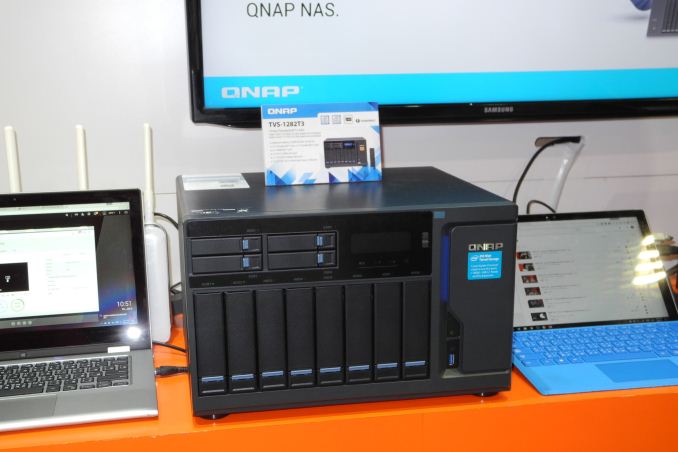



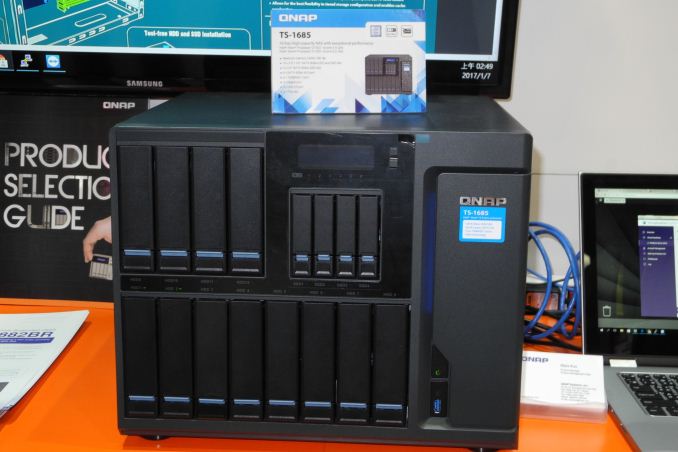
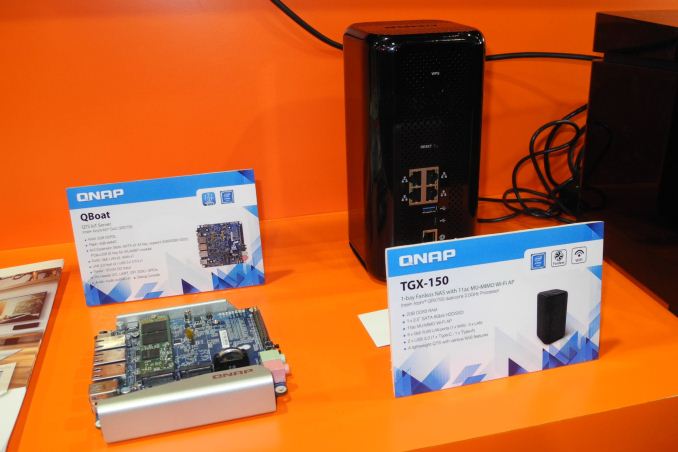

 Quote
Quote
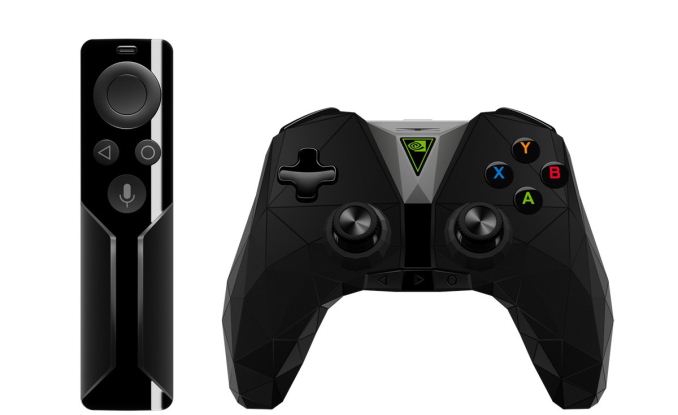

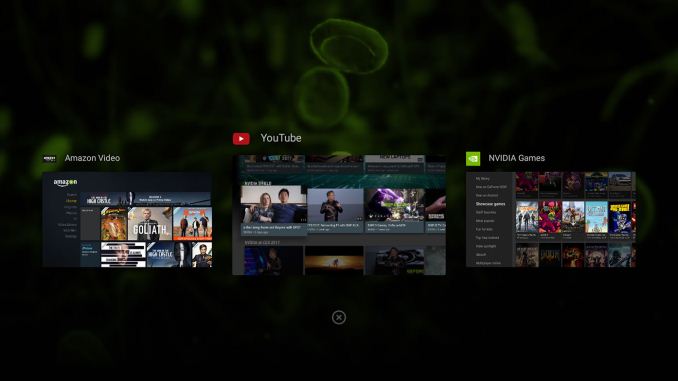
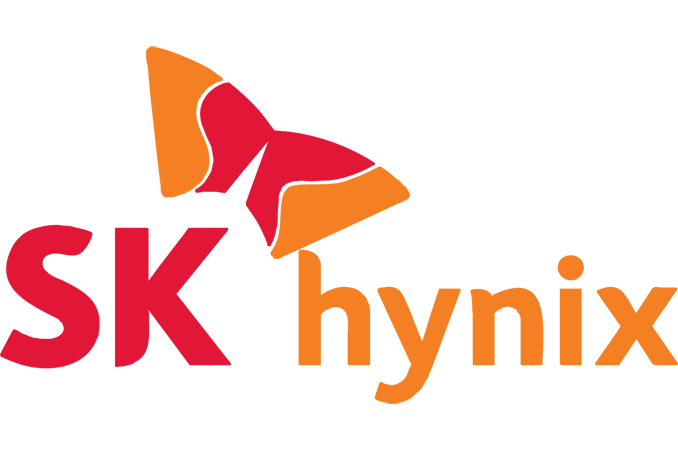
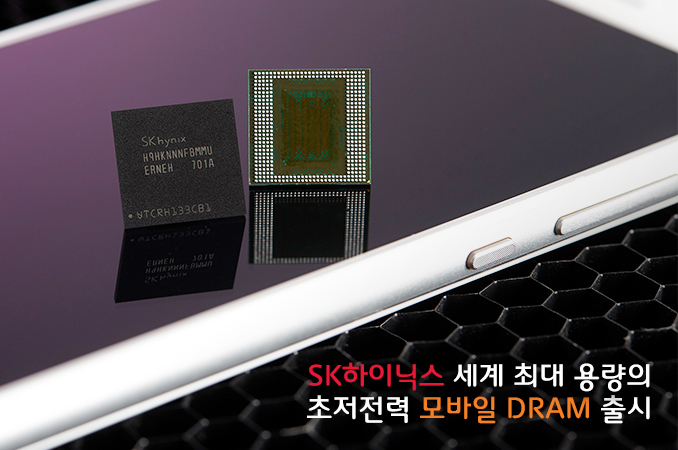
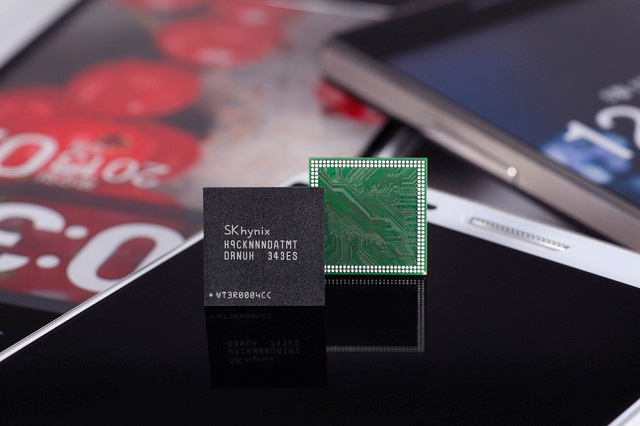
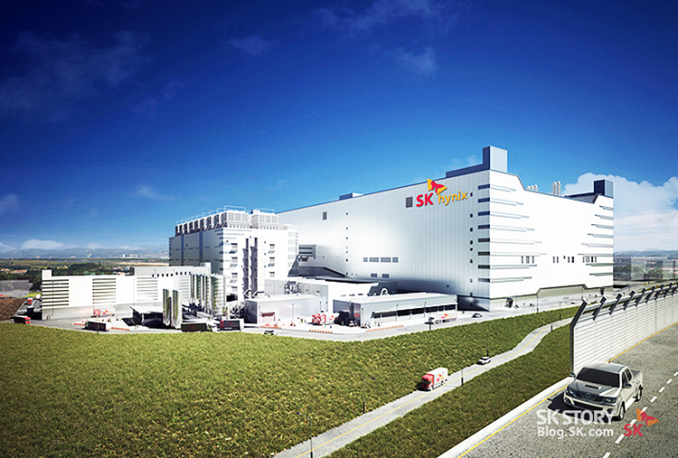
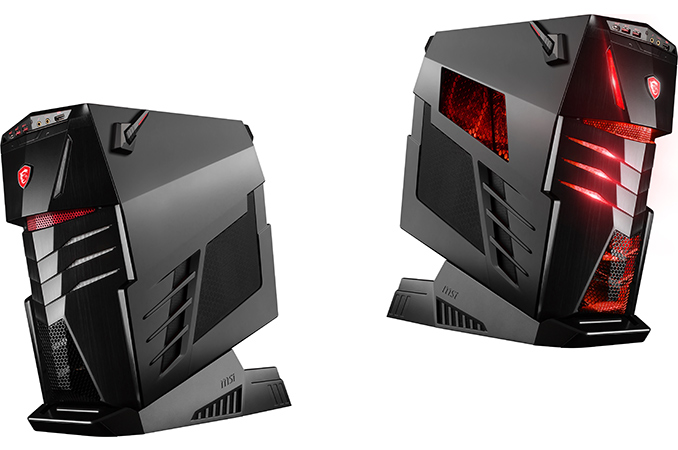










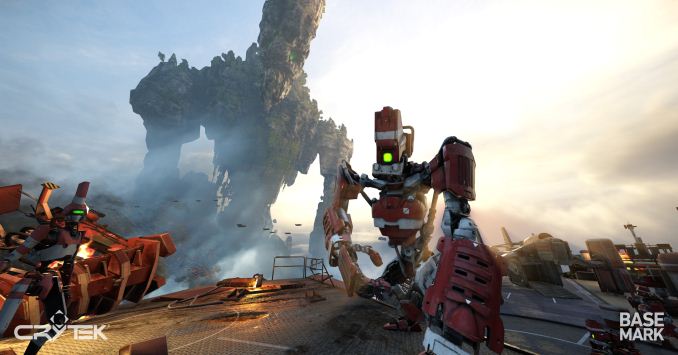
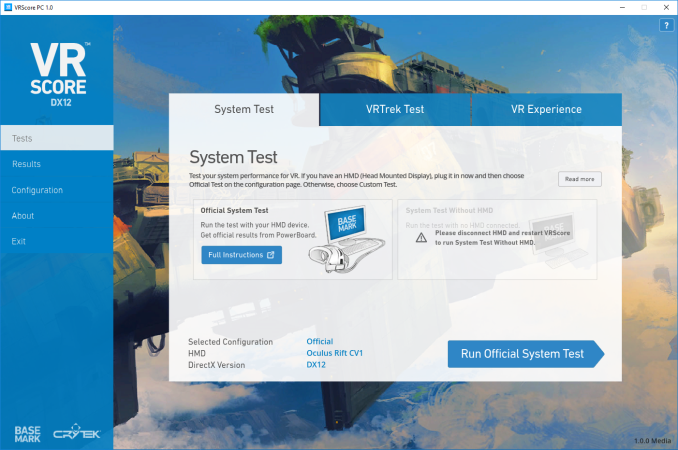
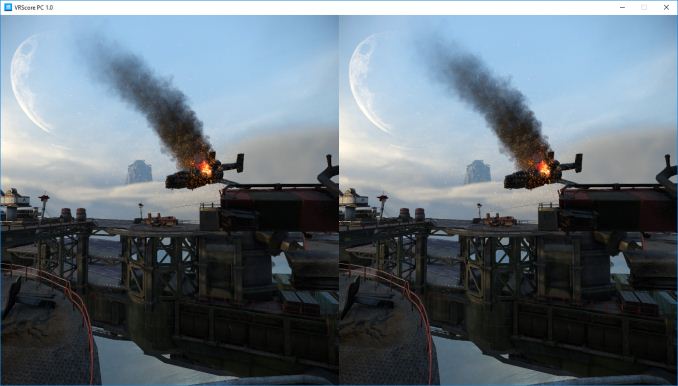
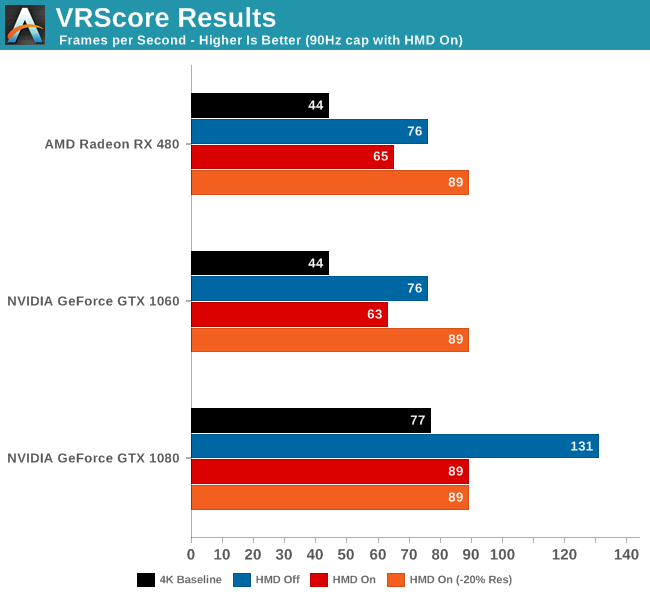
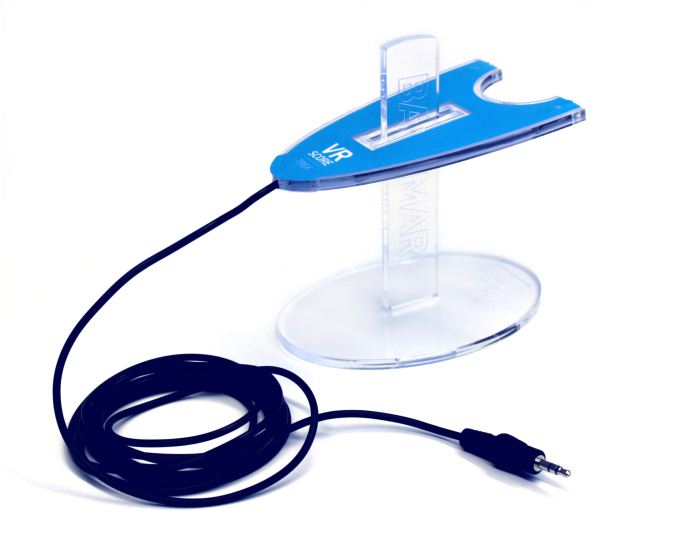
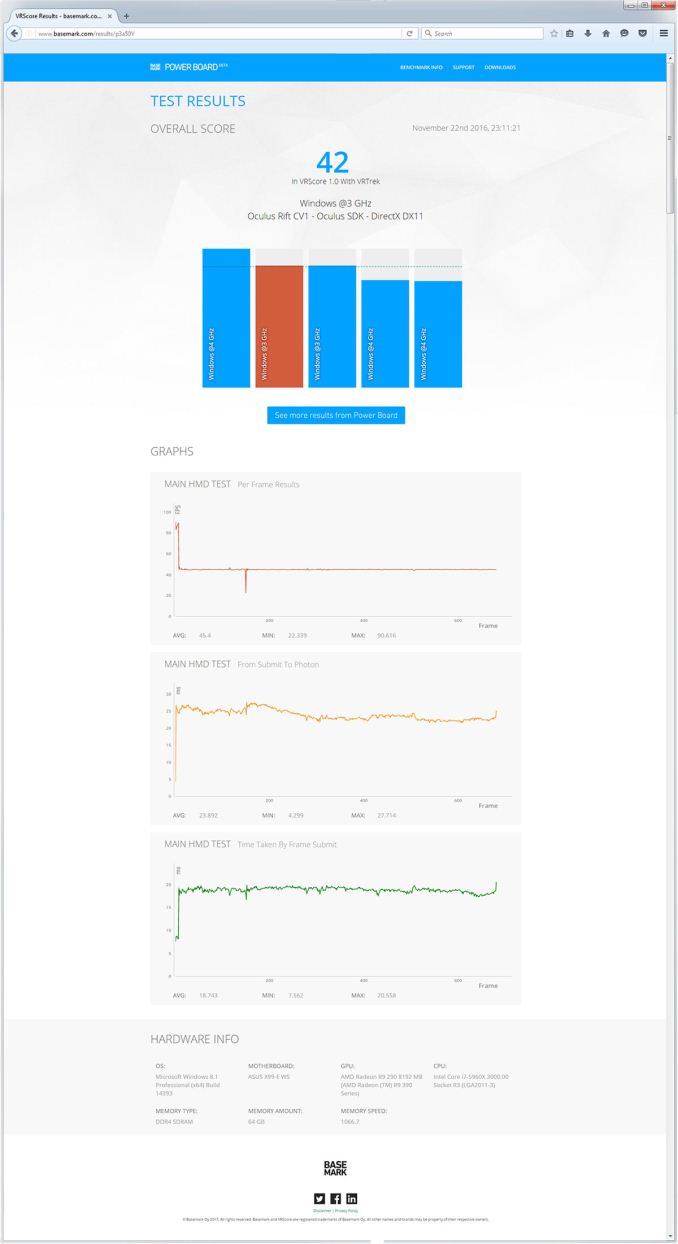
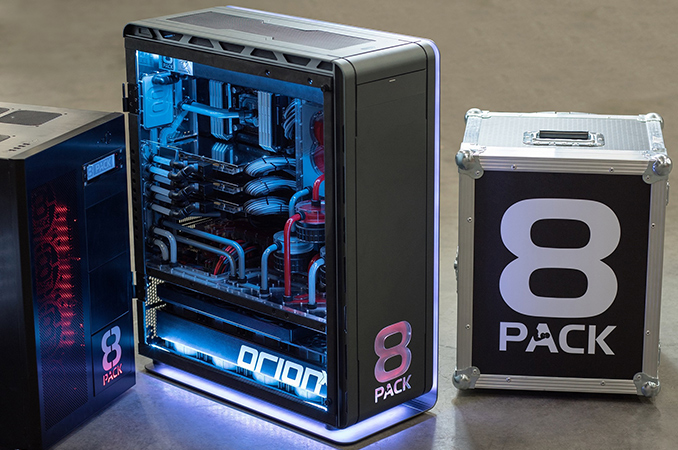

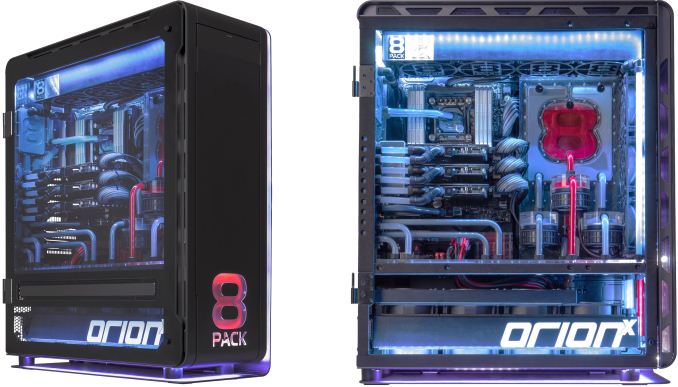


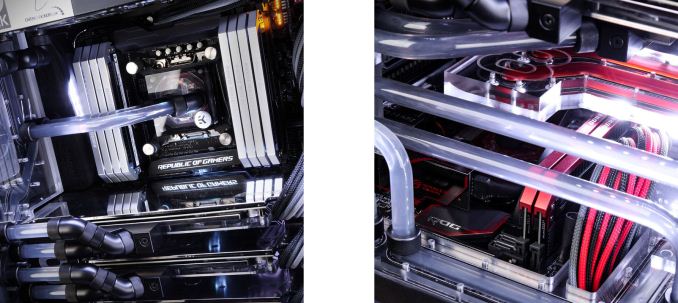
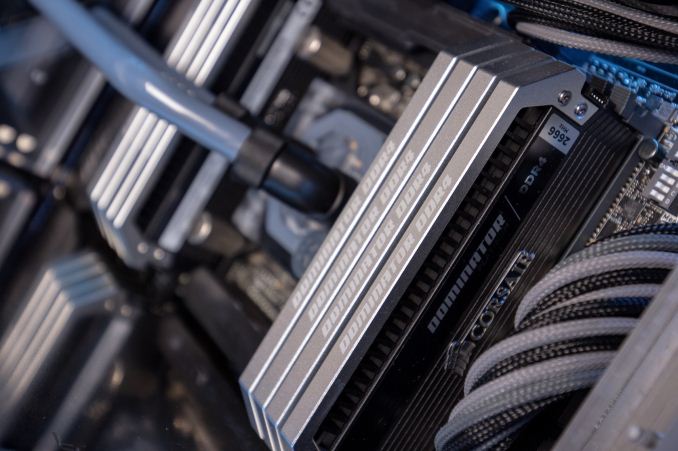
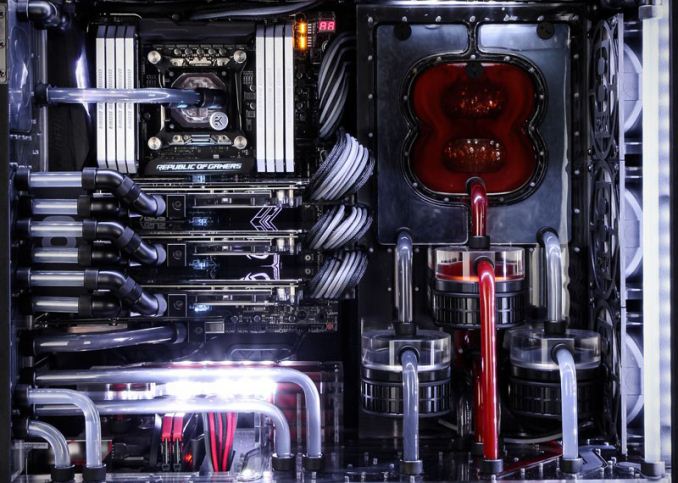
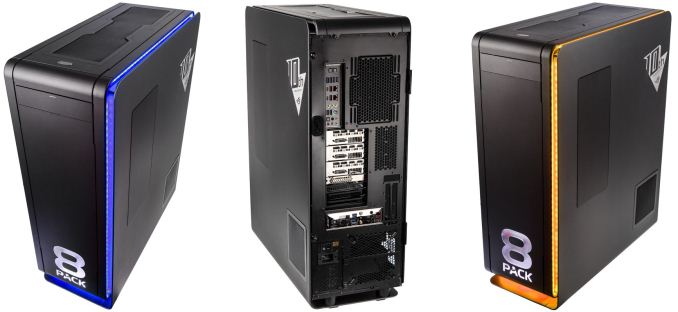
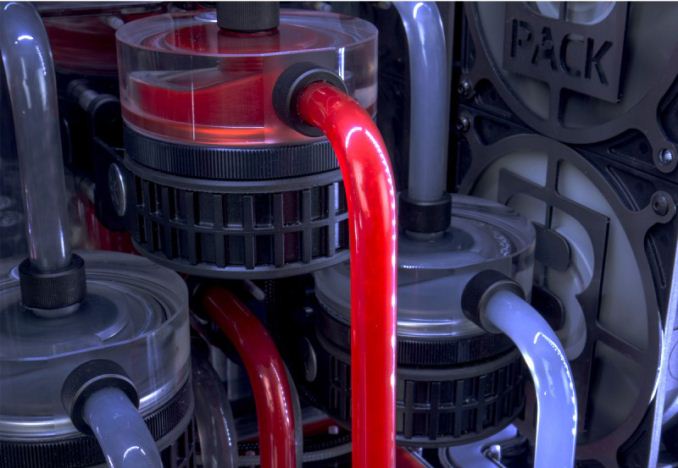

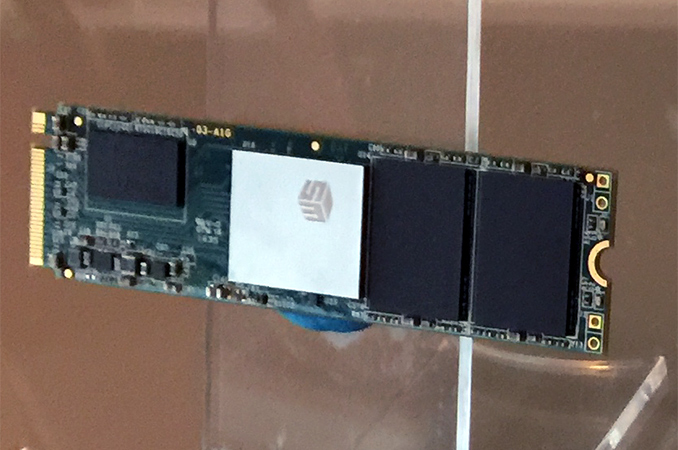
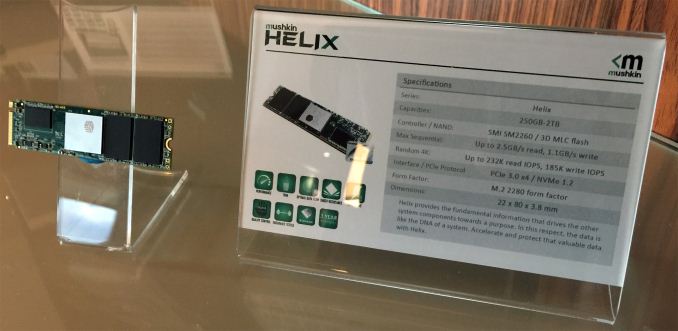
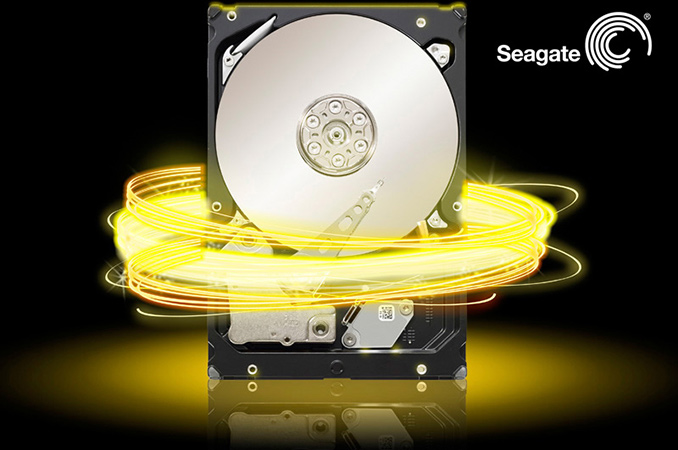

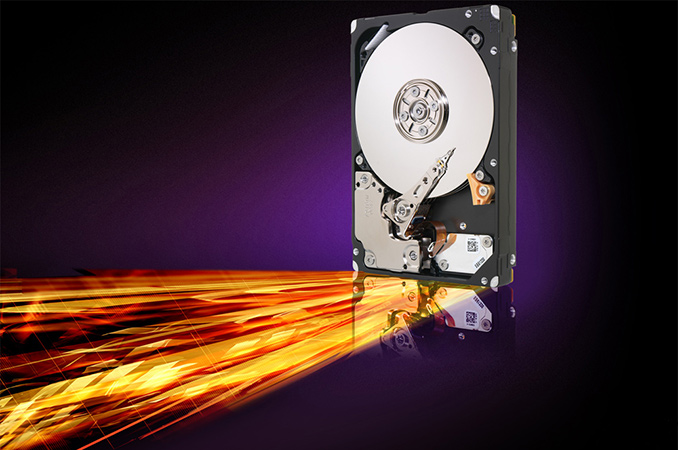
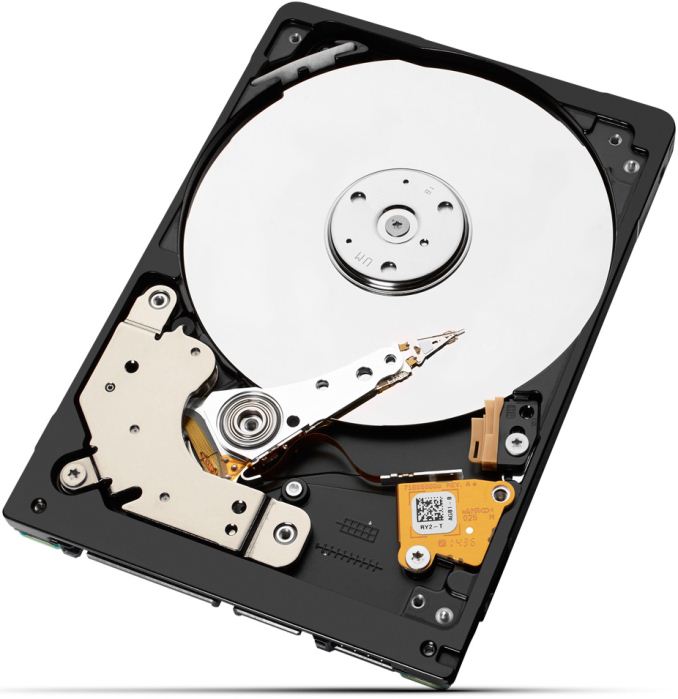


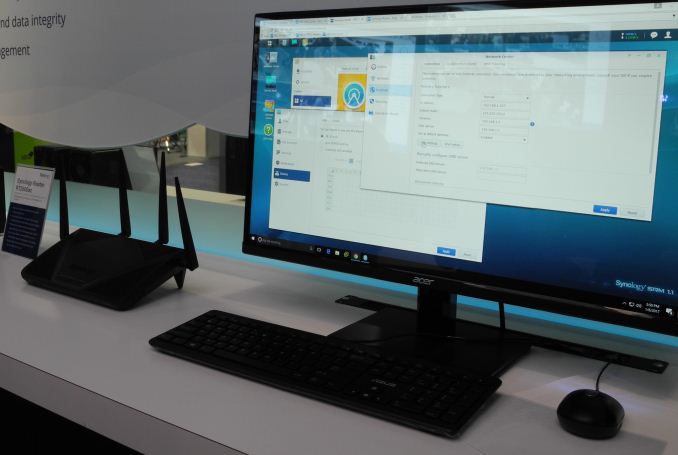



_thumb.png)
_thumb.png)
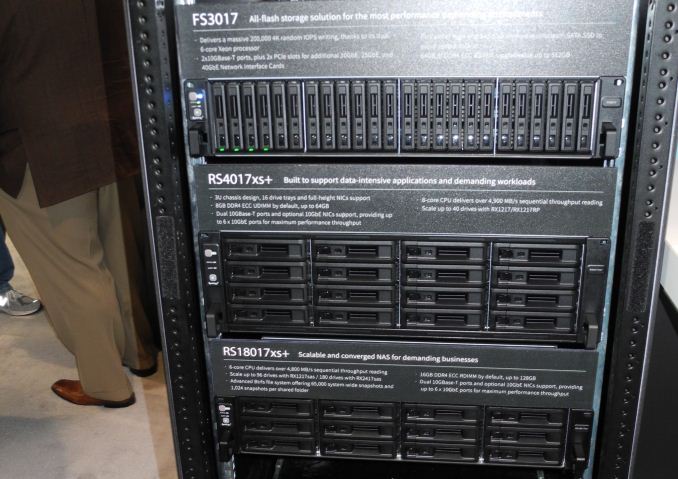




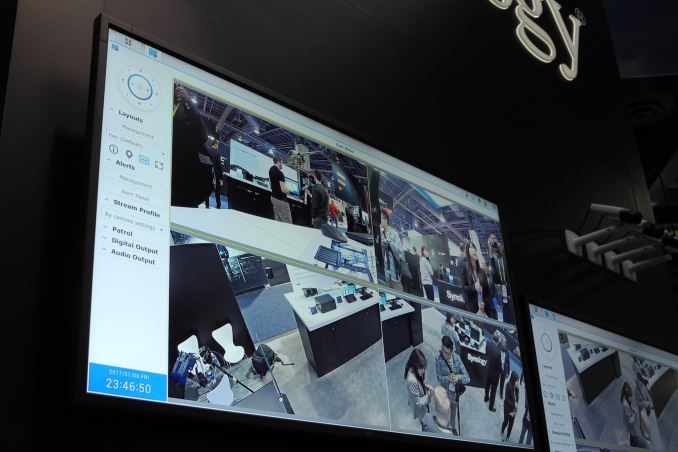
















Bookmarks